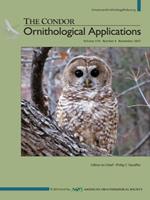Areas of northern California, USA, have been identified as quality habitat for an expanded California Condor (Gymnogyps californianus) Recovery Program. Nonetheless, lead poisoning continues to complicate California Condor recovery efforts within their current range and threatens the viability of future propagules. Therefore, background levels of lead and other contaminants should be assessed as part of a feasibility analysis to determine the efficacy of expanding the Recovery Program into northern California. A California-wide ban on the use of lead ammunition for hunting, scheduled to go into effect in 2019, coupled with hunter outreach programs aimed at reducing the use of lead ammunition, may present new opportunities for California Condor recovery in this region. As such, we captured and studied 2 surrogate species, Common Ravens (Corvus corax) and Turkey Vultures (Cathartes aura), in coastal and near-coastal habitats of northern California to examine relationships between contaminant (lead, mercury, zinc, and copper) exposure relative to distance from the coast (vultures and ravens), age (vultures and ravens), and hunting season (ravens only). Although blood lead concentrations were relatively low throughout our study area for vultures (median = 5.99 μg dL−1, n = 137), median blood lead concentrations of ravens captured during the hunting season (6.4 μg dL−1, n = 10) were almost 6-fold higher than those of birds captured during the nonhunting season (1.1 μg dL−1, n = 17). In addition, for both species, blood concentrations of mercury decreased with increasing distance from the coast, while blood concentrations of lead increased. Given the significant increase in blood lead concentration in ravens during the hunting season, we believe that pervasive exposure to lead demonstrates a risk facing potential propagules of California Condors throughout the species' historical range.
How to translate text using browser tools
20 September 2017
Feasibility of California Condor recovery in northern California, USA: Contaminants in surrogate Turkey Vultures and Common Ravens
Christopher J. West,
Jared D. Wolfe,
Andrew Wiegardt,
Tiana Williams-Claussen

The Condor
Vol. 119 • No. 4
November 2017
Vol. 119 • No. 4
November 2017
ammunition
California condor
Common Raven
contaminants
Gymnogyps californianus
lead
recovery




